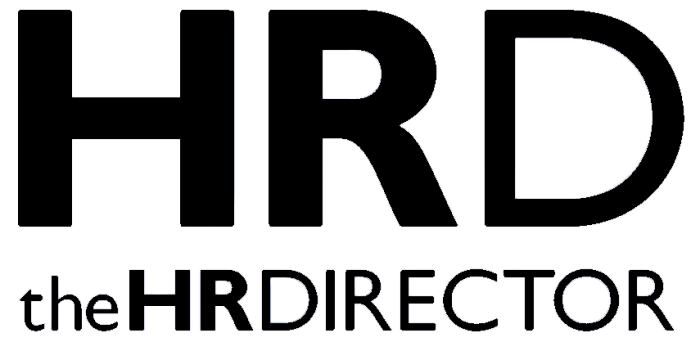In the last decades of progressive technology transformation, both the speed of its uptake and the growth of its possibilities have always travelled ahead of any organisational transformation. There has always been a gap, technology always being ahead of the game, or it seemed, with a sexy solution in front. The reaction for many companies has been not to try to catch up with each other (technology and culture) but to declare them coterminous under a ‘transformation umbrella’. Problem solved. Corporations are fantastic at solving by naming. Labels have never been a problem for organisational development.
For example, many people use ‘digital transformation’ as an all-inclusive term that assumes any reader will recognise its scope, meaning and capacity. Yet, its real scope is incredibly big, from digitalisation of documentation to robotics, for example, making the term a linguistic trap. Who is against digital transformation? Nobody. What does it mean? Well, it depends.
This prominence of a new technology that disrupts or reshapes processes and systems, presumably to gain efficacy, is now part of most organisational life. Of course, for now (?) it’s still people who will use it. A new corporate-wide technology installed to facilitate information sharing between people, for the purpose of better people collaboration, for example, needs one ingredient: people.
Forget people at your peril
This perhaps annoyingly small detail seems at times tragically overlooked. From the old days when CRM systems were a novelty in pharmaceuticals, we have assisted companies with its integration ‘from the people side’.
In a major European company, we had to approach it as a rescue operation since the uptake of the CRM by the sales organisation was ridiculously low. Despite the obvious benefit, users continued to favour ‘old systems’, defeating the purpose of the new tools, let alone their ROI.
Management routinely blamed the technology for not being up to the job, according to them. The result was invariably an upgrade, a more sophisticated (and expensive) version, which consistently resulted in the same problem. And a new cycle started. It took us, client and ourselves, not a lot of time to figure out that the culprit was not the technology, but the culture.
That organisation did not have a lot of collaborative DNA inside. People were quite individualistic, and the ones in the sales force even more so. Technology cannot improve collaboration if collaboration doesn’t exist. Refocusing on people’s behaviours and the power of peer-to-peer influence (under the scaffolding of Viral Change™) changed the course rather quickly and the only upgrade needed became behavioural (we never checked if the providers of the CRM were still friends afterwards).
Which came first? It’s always behaviours
The pattern is aways the same. Many people still treat behaviours as a by-product of what processes, systems and technology do. It’s the old version of the mantra attributed to IT people “if you build it, they will come” (which is in itself a misattribution from a movie, Dr Google tells me). By that logic, processes and systems ‘dictate’ the behaviours needed. The reality is more of the type: your behaviours may dictate the use, misuse, destruction or even vandalism of your processes and systems, old or new. Sure, OK, chicken and egg, but we always forget one of them.
In fact, the manipulating, re-shaping, redesigning, breaking up, aggregating etc. of processes and systems is a well-established corporate game, a hundred times easier than going deeper into the behavioural change needed. But, there is no change without behavioural change. The rest is commentary.
Those who integrate ‘digital transformation’ (to use that concept, with the caveats expressed before) and behavioural and cultural change, not as a sequence but as true Yin and Yang have the total advantage against the chicken and the egg lovers. And my test is very simple: tell me where you spend time and money, and I will tell you what you’ll get.
A recent Gartner report, Trends for 2025, states that: ‘Organisations are creating flatter, more agile organisations, reducing redundant tasks and ensuring consistency through the centralisation of corporate functions. They are also embracing skills-based talent management and fusion teams to drive innovation and efficiency’.
It’s a noble undertaking that, however, seems to prime ‘structures’. Most likely this is a sensible plan, but the statement contains a great deal of behavioural assumptions, which I sense comes from the established corporate logic that ‘behaviours will be the consequences’ of all those house refurbishment projects, as opposed to their foundation.
Start with culture, then work backwards
A while ago we were involved in a business reengineering project in a food processing company in Latin America. It was refreshing to see that management wanted to start with the question ‘what culture is the one that we want to create by doing this?’.
It was unusual and rewarding and, during the course of the 2-year project, we went backwards and forwards to this overriding question, checking progress against that primary driver. People may find it hard to ‘start with culture’ and then work backwards, but it’s the only serious thing to do.
To make things more interesting, AI is not at the gates anymore. It has squatted in all places and sounds unapologetic and sometimes arrogant. Generative AI (GAI) will produce (generate) colossal answers, logical structures, fast navigation of libraries, on demand frameworks, planning and presentation of options, scenarios and possible conclusions, all that unimaginable just years ago. As Pascal Bornet says in his recent book ‘Agentic’ (2025), the small detail is that it doesn’t do (do) anything. I would add yet.
Guaranteed efficiencies depend on Yin and Yang
Here is an example. A little while ago I had to plan a business trip to Dublin and wanted to arrive the night before and stay close to the venue. I did my googling and was offered a ton of options as you would get from any of the tripadvisors of this world. I decided to talk to my imaginary friend in GPT4 and ask for help.
I provided plain language parameters of preferences, going as far as noting that I had to prepare my presentation overnight and needed a quiet room and writing space. By that time, I had already spent a significant time ‘searching’.
AI was incredibly helpful and showed me options indicating which hotels nearby tended to be very busy in the bars during the evening and which may not be helpful for my preparation. We kept ‘talking to each other’ for a few extra minutes and my choice became crystal clear. I said thanks to my imaginary friend, and he replied (as he always does) wising me a safe trip and a successful meeting. He is so polite!
It did not occur to me at the time that something fundamental and ‘logical’ was missing. It took me a long time in fact. Something that my brain had ruled out for me. Only weeks after the penny dropped. AI did not ‘do’ anything for me. AI told me what ‘I’ should do. I had to call and book. I did. AI didn’t. That is Generative AI. It generates; it doesn’t do ‘doing’.
Other tribes of AI, called ‘Agentic AI’, are supposed to actually do things. But this is for another day.
More importantly, the coexistence of different AI-driven components in the organisation does not guarantee efficiency of the whole. The components may be terribly efficient in themselves, within their domain, but they may not talk to each other (have we heard that before outside the AI arena?). In his book, Bornet gives the example of a hospital system where independent and very efficient systems in the Emergency Department increased patient risk, producing very fast contradictory arguments, only to accelerate the need for a physician’s intervention in decisions (maybe that was a good outcome!).
All these technology and culture transformations, need some form of glue. AI will play a significant role, but the trick is in using a true Yin and Yang approach, not a sequential one (‘let’s install technology first’), not a conflictual one (‘AI will take away jobs’) or, in the other end, a Deus-ex-machina one (‘AI will solve all the problems’). For now, I will revert to the Clintonian paraphrased statement: ‘Its behaviours, stupid’.







